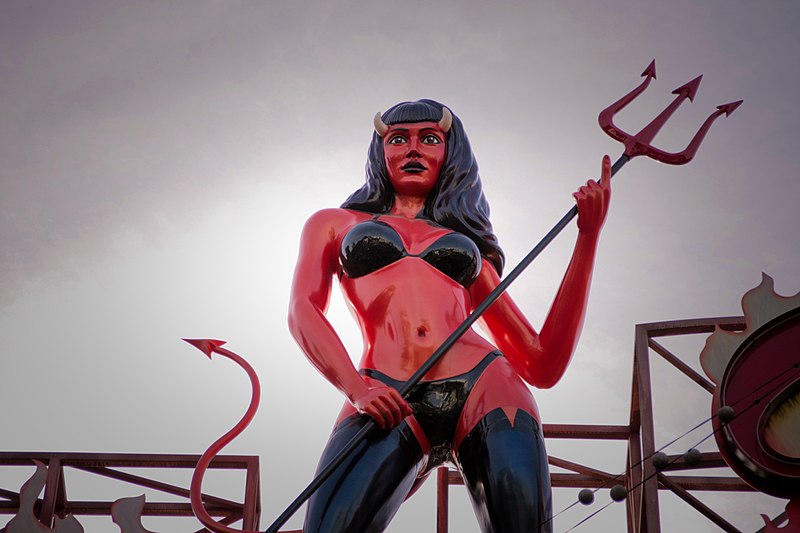Las Vegas, often referred to as “Sin City,” has a rich and captivating history that spans from its humble beginnings as a desert outpost to its current status as a global entertainment destination. In this article, we will take a journey through time to trace the transformation of Las Vegas, from a remote settlement in the desert to the bustling metropolis it is today.
Las Vegas’s history is a remarkable tale of transformation, influenced by a mix of factors such as geography, economics, and the pursuit of entertainment. From its origins as a small railroad town to its emergence as a global tourist hotspot, the journey of Las Vegas is nothing short of fascinating.
Early Settlement and Railroad Connection
Las Vegas traces its roots back to the 19th century when it was a remote settlement in the Mojave Desert. The area gained significance in 1905 when the San Pedro, Los Angeles, and Salt Lake City Railroad linked it to the Pacific Coast. The city’s name, “Las Vegas,” is Spanish for “The Meadows,” a reference to the natural springs that provided water in this arid region.
The Birth of the Las Vegas Strip
The development of the Las Vegas Strip began in the 1940s. The El Rancho Vegas, often considered the first resort on the Strip, opened in 1941. This marked the beginning of a new era for Las Vegas, as more resorts and hotels started to emerge along the iconic boulevard.
The Mafia Era and the Golden Age of Las Vegas
The 1950s and 1960s saw a significant transformation in Las Vegas’s image. It became synonymous with entertainment, and the city’s association with the Mafia added a layer of mystique. World-renowned performers like Frank Sinatra, Dean Martin, and Elvis Presley graced the stages of Las Vegas, cementing its reputation as an entertainment capital.
The Rat Pack and Entertainment Capital
Las Vegas in the 1960s was epitomized by the Rat Pack, a group of entertainers led by Sinatra, who performed at iconic venues like the Sands Hotel and Casino. The city continued to evolve as a place where celebrities, gamblers, and tourists converged to enjoy a wide array of entertainment.
The Corporate Takeover
In the late 1980s and 1990s, a major transformation occurred with the emergence of corporate ownership in the casino industry. Iconic resorts like the Mirage, Treasure Island, and Bellagio were built. This corporate presence ushered in a new era of Las Vegas with a focus on opulence and entertainment.
The Transformation of Downtown Las Vegas
While the Strip flourished, downtown Las Vegas saw a period of decline. However, in recent years, it has experienced a renaissance. The Fremont Street Experience, a pedestrian mall with a canopy of LED lights, revitalized the downtown area, offering a unique blend of old and new.
Modern-Day Las Vegas: Entertainment Extravaganza
Today, Las Vegas is a world-renowned destination for entertainment, fine dining, shopping, and cultural experiences. The city’s resorts are not just for gambling but are designed to cater to a diverse set of interests. From luxury shopping at The Forum Shops at Caesars Palace to the acrobatic marvels of Cirque du Soleil, Las Vegas offers something for everyone.
Las Vegas’s transformation over the years is a testament to human ingenuity and the pursuit of entertainment and leisure. From a remote settlement to a global entertainment mecca, the city has undergone remarkable changes while retaining its allure as “Sin City.” Its history is a fascinating narrative of evolution and reinvention.
Frequently Asked Questions (FAQs)
1. What role did organized crime play in the early days of Las Vegas?
Organized crime, including the Mafia, had a significant influence on the development of Las Vegas in the mid-20th century. They financed and operated many of the city’s early casinos and resorts.
2. Are there any remnants of old Las Vegas still visible today?
Yes, you can still find historic landmarks such as the Neon Boneyard, which houses old neon signs from classic Las Vegas establishments.
3. How did Las Vegas manage to thrive in the desert environment?
The availability of artesian springs and the development of water infrastructure played a crucial role in making Las Vegas habitable and hospitable for settlers and visitors.
4. When did Las Vegas start to diversify its offerings beyond gambling?
The transformation from being primarily a gambling destination began in the late 1980s and 1990s when Las Vegas embraced a more diversified approach to tourism, emphasizing entertainment, dining, and shopping alongside gaming.
5. What is the significance of the Las Vegas Strip in the city’s history?
The Las Vegas Strip has been the epicenter of the city’s transformation, serving as a world-famous entertainment and resort corridor that has drawn visitors from around the globe.

